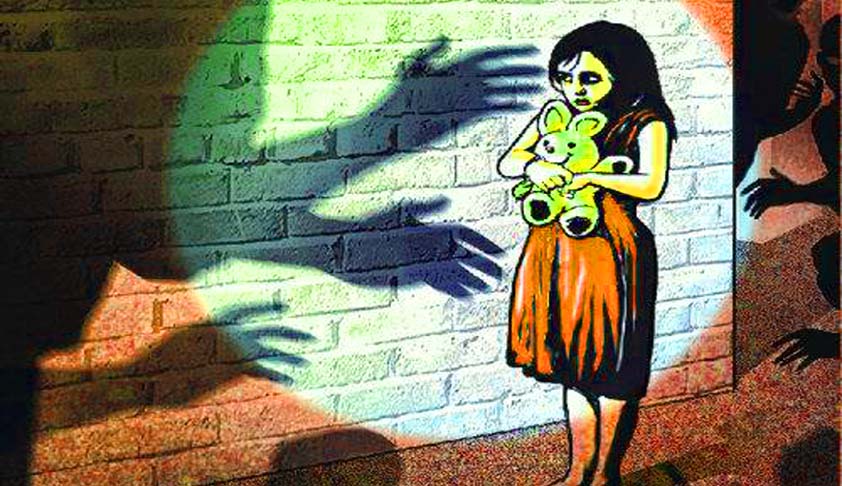Statutory Analysis of Scope of crafting separate punishment for Child Rape Offenders
Namit Saxena
14 Jan 2016 10:52 AM IST

Preface
Swami Vivekananda wrote – “Just as a bird could not fly with one wing only, a nation would not march forward if the women are left behind”. One day before Swami Vivekananda’s 153rd birth anniversary, the Supreme Court heard a petition raising an important socio-legal question in the same context expressed by him {SCWLA v UOI [WP 4/16]}. The petition sought imposition of ‘chemical castration’ as an additional punishment for child rapists. The Court rightly held that it is the domain of the legislature and suggested in Para 10 that distinction may be drawn by Parliament between a girl child and minor and child may be defined.
In my view, this whole issue needs a deeper ponderance on our penological approach and legislative framework towards offenders such as rapists where victim is a child, even more, if a girl. William Wordsworth said ‘Child is the father of the man’. A child truly is special to any civilized society and it is for him the present generation shapes the future. If not for the future, any society will collapse immediately. The upper age limit for ‘child’ differs in every law to suit its requirements. For Juvenile law, it is 18 years; for labour law it is mostly 14 or 16 years; for Constitution it is 14 years; for being a major it is 18 again; 18 years for partnership and so on. As the issue here categorically deals with what should be the maximum age of a minor girl victim to be further bracketed down as a child to create separate punishment, we have to focus on four laws in particular i.e. Constitution, India Penal Code (IPC), Criminal Procedure Code (CrPC), The Protection of Children from Sexual Offences Act (POCSO) & Indian Evidence Act, 1872. In this article I try to trace purely with legislative framework that how a special punishment can be created against rapists where the victim is a girl child; both substantively and procedurally.
Substantive framework
- IPC
Sec 10 of IPC defines a woman as a female human being of any age. There are in particular 11 important references in IPC wherein age of the victim/injured has been made categorically important. Sec. 87 drafts a general exception to all offences in IPC except death and grievous hurt where the victim above 18 years of age gives his consent. Death is partially covered by Exception 5 to Sec 300 which states that if the consenting victim was above 18 years of age, then the culpable homicide does not amount to murder. Sec 305 lays a very interesting and relevant proposition. The title of section states – ‘Abetment of suicide of child or insane person’ and the body of the section again carves out age of victim as 18 years. So, this section specifically deals the upper age of child as 18 years. Section 317 states when a person/parent will be guilty for abandoning a child below 12 years of age. Section 361 crafts special attention to a male child below 16 years and a female child below 18 years of age. Section 366A holds that inducing a minor girl below 18 years of age to go anywhere calls for a harsher punishment. Sec 369 marks a higher punishment for kidnapping or abducting a child below 10 years of age. Similarly Sec 370 puts harder punishment for trafficking of a minor. Sec 375, sixthly gives definition of rape of a girl child below 18 years of age with or without consent. Exception 2 to this section bifurcates penology for married women between the age group of below 15, 15-18 and above 18 years of age. Sec 376(2)(i) marks an aggravated punishment for an offender raping a girl below 16 years of age. Notably, Sec 53 of the IPC lays down an exhaustive list of 6 punishments to be given by criminal courts. Apart from this Life Sentence without remission remains a judicially allowed punishment.
- POCSO
Section 2(d) drafts upper age limit for a child as 18 years. Sexual assault, penetrated sexual assault, aggravated penetrative assault, sexual harassment, use of child for pornographic purposes and repeat offenders have all separate punishment. Reporting of offences and recording of statements by child have also been categorically made different from adults.
- Constitution
Article 15(3) empowers state to create special laws for women and children. Article 21A as a positive fundamental right directs state to give free and compulsory education to a child between 6-14 years of age. Article 24 holds that no child below 14 years of age shall be employed to work in any factory or mine or engaged in any hazardous employment. Article 45 drafts a principle of state policy for early childhood care for children till 6 years of age. Article 51(A)(k) casts a fundamental duty on every parent to provide opportunities to his child between the age of six and fourteen. Item 1 of List III of 7th Schedule allows Centre and States both to legislate on criminal law & Item 5 both to legislate on ‘infants and minors’.
Procedural framework
- CrPC
IPC does not define a ‘victim’ so by virtue of Sec. 4 of CrPC which acts as a nexus between CrPC & IPC, definition of victim can be borrowed from CrPC. Sec 2(wa) of CrPC defines a victim as a person who has suffered any loss or injury caused by reason of the act or omission for which the accused has been charged including his guardians and parents. Sec 24(8) holds that the court may permit the victim to engage an advocate of his choice to assist the prosecution. Sec 27 holds that if the victim is below 16 years of age, the case is to be tried by court of a Chief Judicial Magistrate (CJM). Section 125 gives a stautory right to a legitimate/illegitimate minor child unable to maintain itself, to claim maintenance. Sec 154(1) carves out exception for a woman victim of rape of any age to get FIR written by a woman police officer. Sec 160 further narrows down the bracket for examination as a witness of a male (not between 15-65 years of age), woman of physically challenged individual. Sec 164A lays down special procedure for medical examination of a victim of rape. Sections 174 & 176 lay special procedure of investigation and inquest where suspicion arises or rape is alleged on any woman. Sec 265A hold that a court cannot accept plea bargaining in cases where the offence is against a woman or a child below 14 years of age. Sec 357A-C & 358 form the victim compensation code wherein victim has to be compensated duly. Sec 376D of IPC holds that the fine, if awarded, shall be paid directly to the victim in addition to this compensation.
- Indian Evidence Act, 1872
Sec 114A holds that in prosecution of rape if sexual intercourse is proved and the question of consent of victim arises, it shall be presumed that she did not consent if she states so irrespective of her age.
Penological approach towards offenders of child crimes
Penology in simple words is society’s response towards crime. A textual analysis of above listed provisions makes three things abundantly clear – Firstly, in criminal law definition of child varies from statute to statute and infact from provision to provision; Secondly, child has been recognized as very important statutorily and even more when she is the victim and a woman; Thirdly, there are a plethora of provisions which craft separate penal line of action for offenders of child crimes. In SCWLA v UOI, POCSO has not been mentioned in the judgment. The 5 theories of punishment are pregnant with the fact that a harsher punishment must be awarded to those who deserve it. The Court was correct in holding that is is handcuffed in introducing a punishment as that would amount to writing a new crime as well [Jus dicere et non jus dare]. Interestingly, prior to the 2013 amendment Sec 376(2)(f) laid down harsher punishement for rapists who offended against a woman below 12 years of age. This provision can be supplanted to the book again in form of Sec 376F.
Conclusion
Statutory marginalisation for offenders who brutally commit a crime as disgusting as rape on a girl child is the need of the hour. The Parliament must pencil in an amendment in IPC to this effect and carve out a harsher punishment for rapists who commit the offence against a girl child below 12 years of age. The culture of avoidance/silence till something happens again causing media hue and cry should itself be avoided. Our Parliament and academicians waste a lot of time in ideological polemics. Its high time the cat is set among the pigeons. People who commit rape on innocent girl children are disgrace to our race and civilization. There have been instances where the innocent victim was murdered brutally after raping her. Instances of multiple rapes have also been recorded on girl children. Crafting a separate punishment is not an expansive interpretation but a legitimate penological claim. Appropriate punishment is a dominant ingredient of a healthy democratic set up which only furthers the constitutional expectation of rule of law. Even without taking help of any precedent, it is clear statutorily that the claim is legitimate and is already present for a number of other offences. Let’s hope Parliament in its wisdom comes up with a concrete amendment soon enough. Fingers crossed!
Namit Saxena is a lawyer and can be reached at namitsaxena2007@gmail.com



